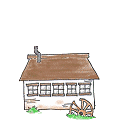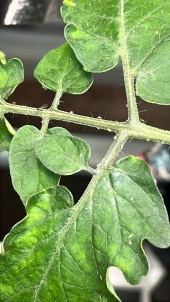




property in Tas, Australia. Sandy / river silt soil.low ph. No nutrients due to leaching. Grazing country. Own water source. Zone 9b.















property in Tas, Australia. Sandy / river silt soil.low ph. No nutrients due to leaching. Grazing country. Own water source. Zone 9b.




Medicinal herbs, kitchen herbs, perennial edibles and berries: https://mountainherbs.net/ grown in the Blue Mountains, Australia















 Giselle
Giselle
property in Tas, Australia. Sandy / river silt soil.low ph. No nutrients due to leaching. Grazing country. Own water source. Zone 9b.
 1
1




Giselle Burningham wrote: How can I prevent it happening again please..




Giselle Burningham wrote:I chose hydroponics as I had ran out of garden space and tomatos take a lot of water .. I am very disappointed with the result. Thanks for the comfrey tips I will try it in beds when I return to Tasmania.
Giselle




John Elliott wrote:
Giselle Burningham wrote: How can I prevent it happening again please..
You can't leave an opening for the blight to exploit. The best way to do that is to load up the tomatoes with so much beneficial bacteria and fungi that any blight spores that wander in are going to be trampled like a rabbit in a cattle stampede. Compost tea applied liberally to the leaves of the tomato is the best way to do this. And maybe a root drench as well.
I used to have problems with Fusarium, but since I began sprinkling compost tea over anything and everything, the Fusarium problem has mostly gone away.
Location: Ohio, Zone 6a
Suburban lot (for now)




A.J. Gentry wrote:
John,
First off great analogy.
Are all blights created equal? Last summer I took a master gardener class and we did cover fungus and bacteria. Would your recommendation for tomato blight be the same answer / solution for apple blight? Or was that called fire blight?
A.J.
 1
1




Ken Peavey wrote:In '09 my tomato and potato crops were completely destroyed by Late Blight, P Infestans. While it is not a fungus, it displays some similar traits. In searching for a remedy (there is none, by the way), I tried some things which slowed down the destruction just a bit.
Surgery
Removing the infected part of the plant as soon as the problem is detected. Effects negligible due to the nature of the oomycete.
Removal of lower leaves and branches of plants in order to improve air circulation and promote a dryer environment. This slowed progress of the disease through sections of field.
Complete removal of the infected plant. It was already too late for the field in this instance.
Compost Tea
How long you brew it determines the dominant microbe. A day or so favors fungal populations. A couple of days promotes bacteria. 3 days or more promotes protozoa. The fungal dominant tea serves to place the beneficial microbes from the tea on the leaf, taking up the space which could otherwise be inhabited by the malevolent fungus.
Trying this in the case of P Infestans, I found the plants sprayed with the tea were among the last to go down. The spread of the infection through the plant was slowed, but it was unstoppable.
Seed the Mind, Harvest Ideas.
http://farmwhisperer.com





Seed the Mind, Harvest Ideas.
http://farmwhisperer.com




"History is created by people. Instead of relying on others, we must enact our own great drama of creativity. Then we can break through the shell of our limited self, advancing and improving ourselves day after day."




John Elliott wrote:
Not all blights are equal. The most insidious ones are the ones that go through some sort of exponential growth phase in a very short time, so that one day the crop looks fine and the next day it is reduced to a pile of goo. The blight that cause the Irish Potato famine (more on that here) is in that category. Unfortunately, it has a lot of company in that category, which means that having a healthy diverse ecosystem is a must if you want to protect yourself for the possibility of blight.
Here is a report on some work out of Germany that yeast may provide some protection against fire blight in apples. It sounds preliminary, but what could it hurt to toss a little sourdough starter in with the compost tea foliar spray?
Location: Ohio, Zone 6a
Suburban lot (for now)




Unfortunately, it has a lot of company in that category, which means that having a healthy diverse ecosystem is a must if you want to protect yourself for the possibility of blight
![Filename: nutriton-sequence.jpg
Description: [Thumbnail for nutriton-sequence.jpg]](/t/31151/a/13718/nutriton-sequence.jpg)
"History is created by people. Instead of relying on others, we must enact our own great drama of creativity. Then we can break through the shell of our limited self, advancing and improving ourselves day after day."






Ken Peavey wrote:Here's another thread with some good information: major Late blight outbreak.





"History is created by people. Instead of relying on others, we must enact our own great drama of creativity. Then we can break through the shell of our limited self, advancing and improving ourselves day after day."





|
I remember before the flying monkeys became such an invasive species. We had tiny ads then.
Play Your Way to a Sustainable Lifestyle: Uncover Permaculture Principles with Each Card
https://gardener-gift.com/
|






